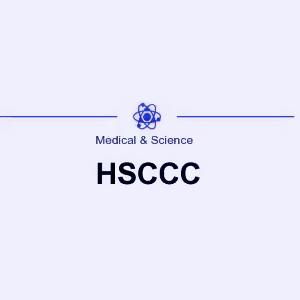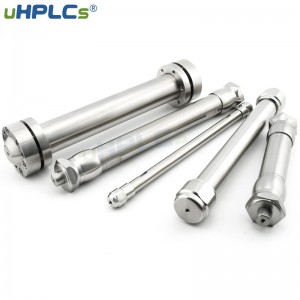High-speed counter-current chromatography is a new analytical separation technique, mainly based on the differentiation of solutes between two immiscible solutions to distribute the differentiation factor to achieve the separation effect. The application of high-speed counter-current chromatography in the separation and purification of chemical components of Chinese medicine has many advantages. It has become an important technique for the analysis and separation of chemical components of Chinese medicine.
Traditional Chinese medicine is recognised worldwide for its efficacy, and in order to develop and utilise it in depth, it is necessary to identify the specific active ingredients. Concerning the separation of the components of traditional Chinese medicine, many of the separation and purification techniques used previously have had difficulty in achieving satisfactory results in this complex process. Traditional separation methods are very limited for some components, especially those with similar structures, similar properties, low content and non-crystallisable components, which are prone to sample denaturation, poor recovery and high adsorption loss rates during actual separation. Dr Yiochiro Ito of the NIH invented a new liquid-liquid extraction and partition chromatography method in the 1980s, High-speed Countercurrent Chromatography (HSCCC).
How HSCCC works
HSCCC is an effective method for separating components based on the liquid-liquid partition principle employing differential partition coefficients of different substances in two phases. The composition of each HSCCC is relatively fixed and includes an infusion pump, detector, workstation, separation column, data acquisition system, and fraction collector. Regarding the stationary phase, one phase of the pre-equilibrated two-phase solvent is selected for filling the spinal column. The mobile phase is pumped at a certain flow rate into the spiral column in a high-speed rotating state. One criterion for judging that the system has reached equilibrium is to observe whether the flowing liquid is stratified. At this point, the sample can be injected into the high-speed counter-current chromatographic system. The separation operation of the spiral tube separation column is accomplished according to the differential partition coefficients of the different components in the two phases. The separation results are recorded with a data acquisition system and workstation. There are various ways to control the separation effect during the operation of the instrument, such as selecting the solvent system, adjusting the column temperature, sample concentration, volume flow rate, elution method and the speed of the mobile phase. In addition, the rational choice of detector is based on the characteristics of the sample to be detected, commonly used are ultraviolet-visible detectors (UV-Vis), evaporative light scattering detectors (ELSD), mass spectrometry detectors (MS) and thin layer chromatography detectors (TLC).
HSCCC characteristics
HSCCC is characterised by high product purity, high separation efficiency, low solvent consumption, high throughput, and non-adsorption and non-stick staining, and its specific applications are not only limited to non-polar compounds but are also applicable to polar compounds and have good applications in the purification and refinement of different components of crude extracts of Chinese medicine. At this stage, two main types of high-speed counter-current chromatographs have been developed: analytical, which is mainly used for the quantitative analysis of the chemical components of TCM, and preparative, which is mainly used for the separation and preparation of the chemical components of TCM. Based on these features, HSCCC has achieved effective applications in different fields, such as biopharmaceuticals, food production, environmental analysis, etc.

High-speed counter-current chromatography for the separation of various chemical components of traditional Chinese medicine
Alkaloids
Alkaloids are an important component of the effective chemical composition of traditional Chinese medicine. They are naturally nitrogenous compounds with drug development and therapeutic value for important diseases and are widely found in plants. They are an active component of traditional Chinese medicine, with extremely high physiological activity and very complex nitrogen heterocyclic structure. Plus, they contain a variety of alkaloids simultaneously, which greatly increases the difficulty of separating effective chemical components. The solvent systems used by HSCCC for the isolation of alkaloids are mainly petroleum ether, ethyl acetate, methanol, and water, with applications such as the isolation of berberine, cypress alkaloids, basmati and white guajava alkaloids from Phellodendron, the isolation of steroidal alkaloids from quinoa, etc.; other solvent systems used for the extraction of alkaloids include the isolation of dehydrocorydaline and sea poppy alkaloids from extracts of Yerba Miaoli, the isolation of yerba Miaoli from yerba Miaoli and Protopine, protopine, sulforaphane A and bicuculline in summer wormwood, and lipid-soluble alkaloids in rockwork, etc.
Glycosides
HSCCC separates and purifies glycosides, the active chemical components in Chinese medicine, mainly using ethyl acetate-water as the basic composition of the solvent system, with auxiliary solvents such as methanol, ethanol, n-butanol, and chloroform. The separation of glycosides is used in the following applications: separation of crude extracts of Rhodiola Rosea and Epimedium glycosides to obtain Rhodiola Rosea and Epimedium glycosides, separation of crude extracts of Glycyrrhiza glabra to obtain Glycyrrhizin and Mangiflora glycosides, separation of olive leaves to obtain Olive bitter glycosides, simultaneous separation from crude extracts of sweet tea to prepare sweet tea glycosides [2], etc.; Chen Tao et al. used HSCCC to separate and prepare 1-O-Sakuranose-3,7,8-tris. The crude extract of mulberry anthocyanin was separated in a two-phase solvent system using n-butanol-methyl-tert-butyl ether-acetonitrile-water-trifluoroacetic acid (2:2:1:5:0.01, V/V) to obtain delphinidin-3-glucoside, cornflower-3-glucoside, and geranin-3-glucoside with the contents and purity of 17.4, 33.7 and 9.8 mg, respectively. 33.7, 9.8 mg/100mg, and 92.27%, 94.05%, and 90.82%, respectively.
Flavonoids
Flavonoids are one of the most widely distributed natural compounds in Chinese herbal plants and are often present in the free state or combined with sugars to form glycosides. Regarding the separation of flavonoid glycosides and free flavonoid components, the solvent system is different in the specific process of high-speed counter-current chromatography separation, often with ethyl acetate-water as the main composition, and then methanol, ethanol, n-butanol, and chloroform as auxiliary solvents depending on the herb.
Terpenoids
Terpenoids are a group of compounds derived from mevalonic acid (MVA) with two or more isoprene units (C5 units) on the basic carbon shelf, which are widely distributed in traditional Chinese medicine. Methanol, ethanol, acetonitrile, n-butanol, and chloroform are used as auxiliary solvents to achieve the best results. For example, six triterpenoids, namely sesquiterpene acid, sesquiterpene acid methyl ester, sesquiterpenes acid methyl ester, betulinic acid, and oleanolic acid, were isolated and prepared from Sesamum indicum. 96.1 %), 5-Hydroxydragon-2-O-β-D glucoside (40 mg, 96.3 %), isolation of Ganoderma lucidum to obtain Ganoderma terpene ketone alcohols, etc.
Anthraquinones
Anthraquinones in Chinese medicine have been reported to have antidiarrhoeal, hemostatic, antibacterial, antiviral, and hypolipidemic effects. As the quinones in Chinese medicine are often a combination of compounds with similar properties, only a mixture is often obtained using the usual extraction methods. By applying HSCCC, anthraquinones can be further separated and purified. For example, the two-phase solvent system of petroleum ether-ethyl acetate-methanol-water was used to separate the anthraquinones from rhubarb, and the orange cassia, elaterin, 1-methoxy-2-hydroxyl rhubarb, yellow cassia, 1-O-methyl rhubarb, cassia, rhubarb in from cassia; the solvent system of trichloromethane-methanol-water (4:3:2) was used to separate the anthraquinones from the crude extract of He Shou Wu The anthraquinones in the crude extract of He Shou Wu were isolated to obtain rhodopsin, rhodopsin-8-O-β-D-glucopyranoside, rhodopsin methyl ether-8-O-β-D-glucopyranoside, and hydroxy rhodopsin.
Lignans and coumarins
Lignans are usually found in the resinous and woody parts of plants, rarely in cryptogams, mostly in a free state, and a few in combination with sugars to form glycosides, hence the name lignans. Coumarins and their derivatives also have a wide distribution in the plant world. Lignans mostly have a biphenyl ring octadiene parent nucleus and are a class of small molecules with low polarity. Therefore, in the isolation and preparation of lignans from Schisandra Chinensis, a solvent system of n-hexane-ethyl acetate-methanol-water was used to obtain five monomeric components: Schisandra A, domain J, Schisandra B, Schisandra ester A, and schizandra methyl, with the purity of 98.74%, 94.32%, 99.53% and 94.23% respectively. The hexane-ethyl acetate-methanol-water HSCCC solvent system (1.5:2.5:2:1.5) was selected to isolate and prepare three coumarins from Schisandra Chinensis roots with high-quality fractions of dihydroparisol acetate, serpentine, and dihydroparisol angelica; petroleum ether-ethyl acetate-methanol-water (5:5:5:4) was used as the solvent system. 5:5:4) was used as the solvent system for HSCCC isolation to isolate the extracts of pre-Coumarin II, North American apigenin, white flower pre-Coumarin, and psoralens.
Phenolic compounds
Phenolic compounds in Chinese medicine are widely found in the secondary metabolites of plants. When extracting and separating such substances, attention should be paid to using a strong polar solvent system when using the HSCCC method because of their complex and unstable structure. For example, the best solvent system, HEMW (1.2:8.8:1.7:8.3, V/V), was used for the isolation of polyphenols from olive leaves to obtain bitter olive glucoside, lignan-4′-O-β-D-glucoside, and hydroxytyrosol; the solvent system hexane-ethyl acetate-methanol-water (1:7:0.5:3, V/V) was used for the isolation and preparation of chebulic acid, chebulic acid, ellagic acid and tannic acid from the crude extracts of Tribulus. The separation and preparation of three high molecular weight phenolic acids, namely chebulic acid, chebulinic acid, and ellagic acid, from the crude extract of Chebulan were carried out with good results.
Conclusion
Since the introduction and application of HSCCC, it has become a powerful and promising method for the purification and separation of the active chemical components of traditional Chinese medicine. Each key development of HSCCC will profoundly impact the study of the members of traditional Chinese medicine. The development of HSCCC technology and its integration with various assay and structure analysis techniques will certainly become an important part of HSCCC development.
Post time: Feb-04-2023








